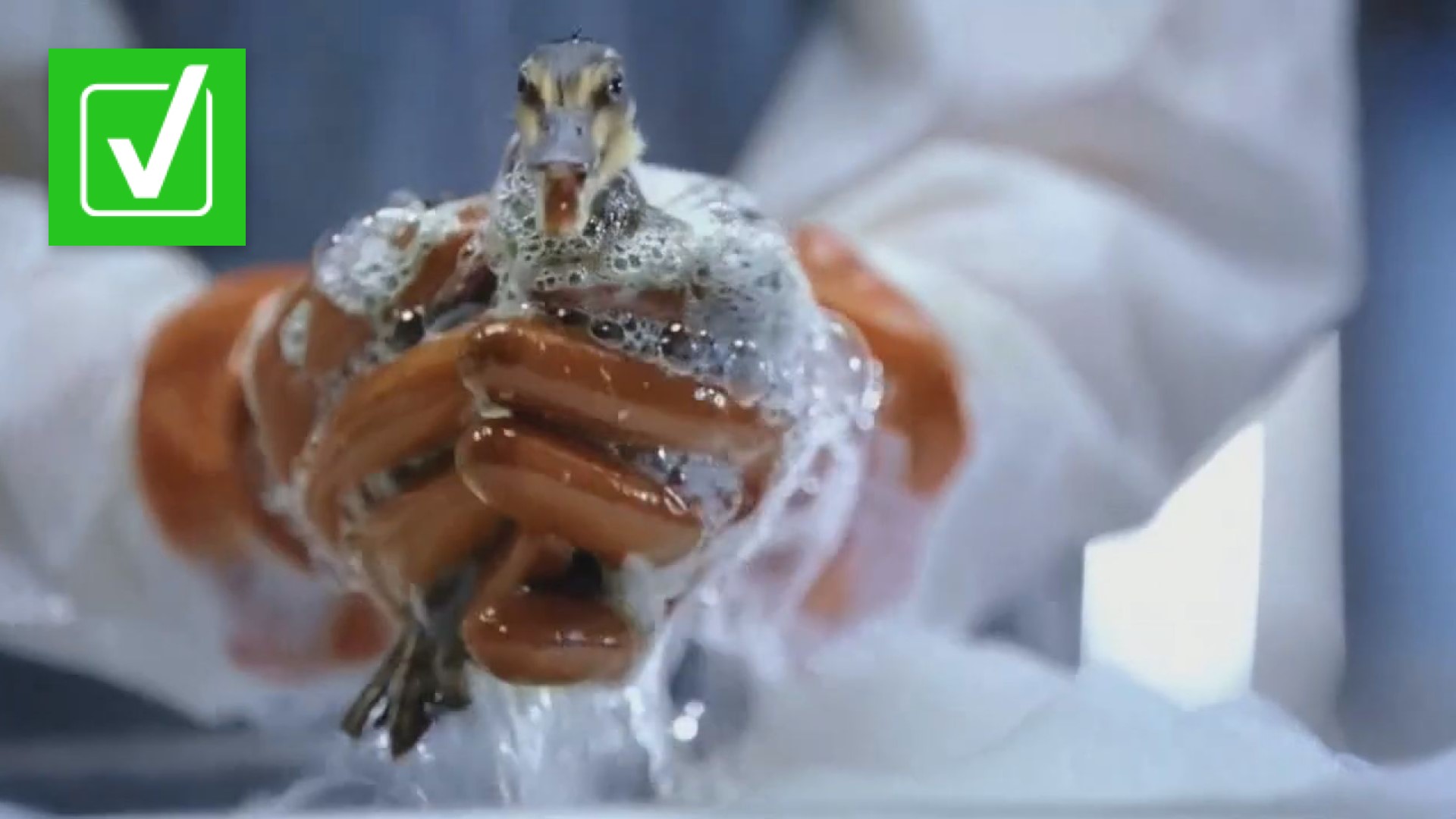SAN DIEGO — Remember those commercials where rescue workers used Dawn dishwashing liquid to save oil-soaked animals?
The recent spill off Orange County had us wondering, is that commercial true? Or were they just tugging at our heartstrings to get us to buy dish soap?
The commercials claim Dawn is the go-to product to clean oily wildlife, including birds, marine mammals and turtles.
“To help save wildlife affected by oil spills, rescuer workers have opened up a lot of Dawn,” according to one commercial on YouTube.
While we wait to see how many animals are affected by the California oil spill, we VERIFY the claims about dishwashing soap.
THE QUESTION
Do rescue workers use Dawn dish soap to clean up animals from oil spills?
THE SOURCE
Kim Peterson, the supervisor of animal rescue with SeaWorld San Diego
THE ANSWER
Yes, dish soap is used as part of the process to clean oily animals following a spill. And Sea World San Diego specifically uses Dawn brand soap for their rescues.
WHAT WE FOUND
Before an animal gets washed, it receives a physical examination and blood tests, Peterson explained. It also gets fed and receives fluids.
About 24 to 72 hours later, rescue teams use a non-toxic vegetable-type oil to break down the sticky, oily tar that gets stuck in the animal’s fur or feathers.
Then, the animal is washed with warm water and dish soap for about an hour.
“You just kind of squish the soapy water through the feathers,” said Peterson.
And, yes, the SeaWorld team does use Dawn, the same product they've used since the 1989 Exxon Valdez oil spill in Alaska.
“I’ve washed hundreds of animals and it's very effective,” said Peterson. “That was the safest product they found and the most effective product that they found. And, it has continued on for all these years and it's what we still use today.”

